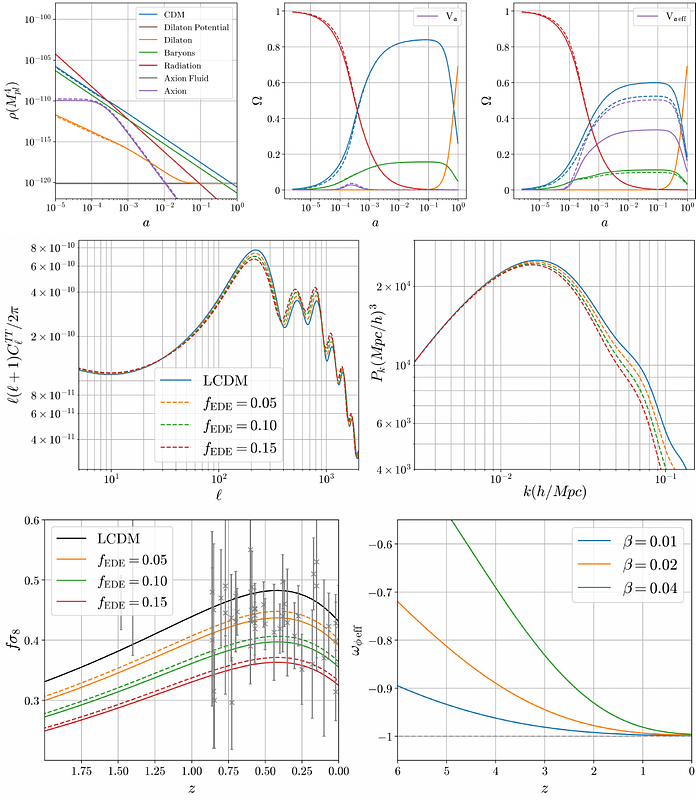Screened Axio-dilaton Cosmology: Novel Forms of Early Dark Energy

Screened Axio-dilaton Cosmology: Novel Forms of Early Dark Energy
Adam Smith, Philippe Brax, Carsten van de Bruck, C. P. Burgess, Anne-Christine Davis
AbstractWe study the cosmology of multi-field Dark Energy, using a well-motivated axio-dilaton model that contains the minimal number of fields to have the 2-derivative sigma-model interactions that power-counting arguments show naturally compete with General Relativity at low energies. Our analysis differs from earlier, related, studies by treating the case where the dilaton's couplings to matter are large enough to require screening to avoid unacceptable dilaton-mediated forces in the solar system. We use a recently proposed screening mechanism that exploits the interplay between stronger-than-gravitational axion-matter couplings with the 2-derivative axion-dilaton interactions to suppress the couplings of the dilaton to bulk matter. The required axion-matter couplings also modify cosmology, with the axion's background energy density turning out to resemble early dark energy. We compute the properties of the axion fluid describing the rapid oscillations of the axion field around the time-dependent minimum of its matter-dependent effective potential, extending the usual formalism to include nontrivial kinetic sigma-model interactions. We explore the implications of these models for the Cosmic Microwave Background and the growth of structure and find that for dilaton potentials of the Albrecht-Skordis form (itself well-motivated by UV physics), successful screening can be consistent with the early dark energy temporarily comprising as much as 10% of the total density in the past. We find that increasing the dilaton-matter coupling decreases the growth of structure due to enhanced Hubble friction, an effect that dominates the usual fifth-force effects that amplify structure growth.